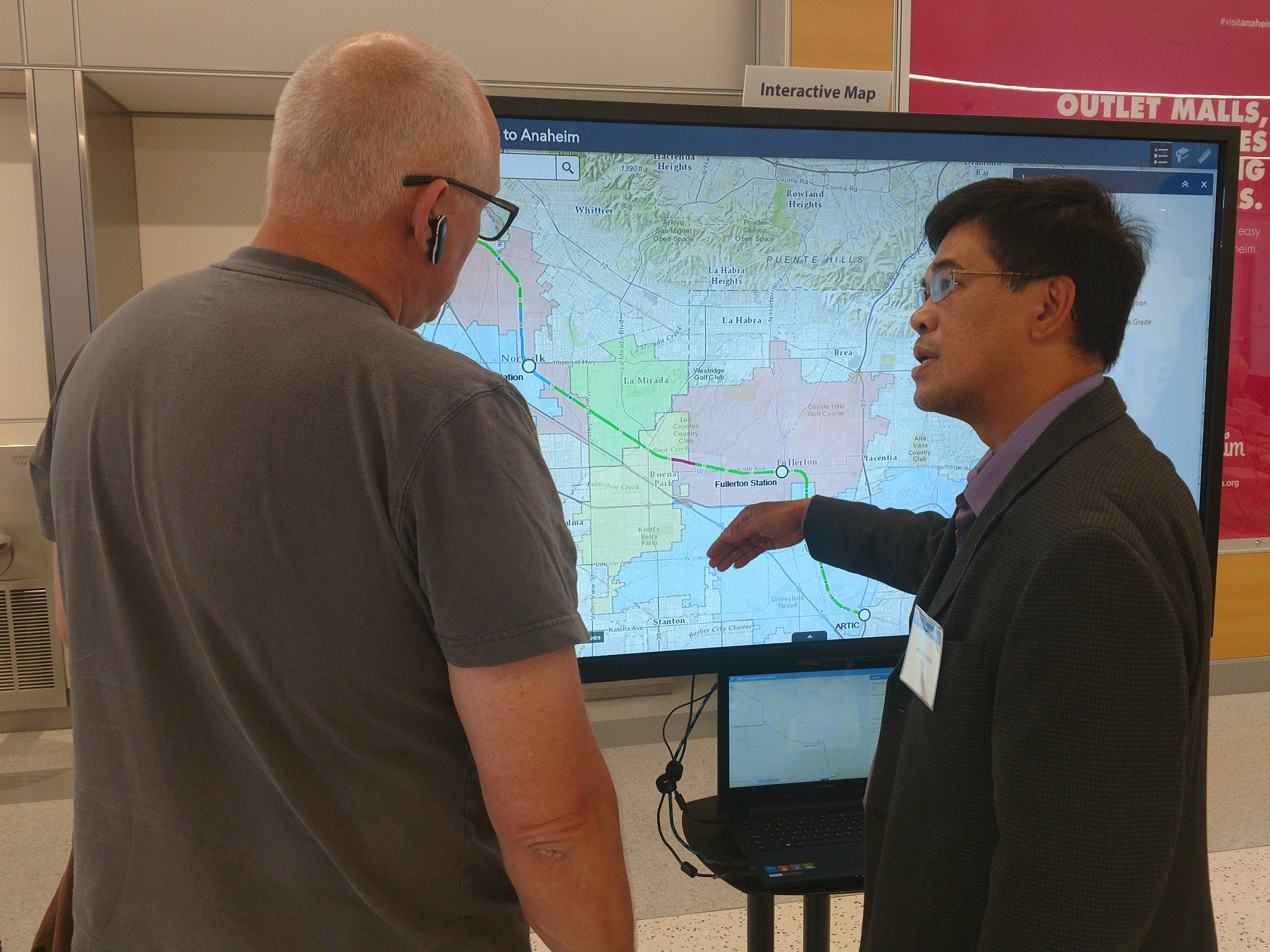California's High-Speed Rail Authority brought its public forum roadshow to the Anaheim Regional Transportation Intermodal Center (ARTIC) two weeks ago to share proposed project alternatives for the Los Angeles-to-Anaheim route.
The meeting was one of four in the region presenting details about the thirty-mile portion connecting Los Angeles Union Station to ARTIC. Using the existing Los Angeles-San Diego-San Luis Obispo rail corridor, the high-speed rail route would travel through Los Angeles, Vernon, Commerce, Bell, Montebello, Pico Rivera, Norwalk, Santa Fe Springs, La Mirada, Buena Park, Fullerton, and Anaheim.
The meetings were meant to gather input from local communities about preferred alternatives, stations, and updates on grade separations along the route. More than sixty people attended the fourth CAHSRA public meeting on April 6.
The Los Angeles-Anaheim segment is the southernmost part of the first phase of the high-speed rail program, which will connect the San Francisco Bay Area to the Los Angeles Basin. Operations of this route are expected to start in 2029.
Roughly $4 billion is being invested by CAHSRA and its partners, which include Metro and OCTA, to make enhancements and improvements around the high-speed rail stations along the Burbank-Anaheim corridor.
Currently, fifteen roads cross railroad tracks at the same grade, and eleven of those are proposed for grade separation so that high-speed rail can run either above or below the road. Twenty-three of the existing crossings will require changes, which can include electrification and/or modification of the track. Two crossings will remain at grade, and two roads are proposed to be closed at the tracks.
The location of the eleven new proposed grade separations are as follows:
- Pioneer Blvd.
- Norwalk Blvd.
- Los Nietos Rd.
- Rosecrans Ave./Marquardt Ave. (managed by LA County Metro)
- Orangethorpe Ave.
- La Palma Ave.
- Broadway
- Vermont Ave.
- Ball Rd.
- Cerritos Ave.
- State College Blvd.
The meetings presented interactive maps and staff answered questions about the proposed route. The community feedback will be incorporated into the draft Environmental Impact Report, which is expected to be published later this year. "The goal was to get as much public feedback [as possible]," said Adeline Yee, CAHSRA spokesperson.
From Burbank to LA and LA to Anaheim, the plan is to use the existing corridor in its current capacity and make modifications as needed, such as increasing expanding stations and adding fencing and sensors to prevent people from walking on tracks, said Michelle Boehm, CAHSRA's Southern California regional director.
The high-speed rail stations will be located at currently existing train stations -- Los Angeles Union Station, Norwalk/Sante Fe Springs, Fullerton, and Anaheim. These stations will add platforms and tracks modified for high-speed rail, improve access for pedestrians and bicyclists, and be accessible from both sides of the rail corridor, said Melissa de la Peña, project manager for both the Burbank-Los Angeles and Los Angeles-Anaheim segments.
"Along with that (we've) been finding ways to enhance the safety of the corridor, reducing emissions and congestion through implementing some of those grade separations, eliminating road traffic wait times. And we also wanted to maintain capacity for both passenger and freight service that exist on the corridor today," Peña added.
Most of the public's questions at the workshop focused on the operation of the system -- e.g. fare structure, construction funding-- and changes to the existing route.
A couple of the questions were simple, but pragmatic, while a couple were comical. One questioner asked, "Can you put a penny on the tracks?" -- the answer is, to be clear, a definitive no, said Boehm. Another asked if pets could be brought on the train.
"We don't have a policy for that at this point," said Boehm.
Forty-nine-year-old Anaheim resident Son Nguyen said that he was excited for the high-speed rail because it would provide an alternative to flying to San Francisco to see his family.
Denise Weyhrich, 60-year-old City of Orange resident, said that she looked forward to the connection HSR would make between Orange County and Los Angeles and the rest of the state. "I'm excited that San Francisco will be united with us."
Check out the full presentation at the CHSRA website.







